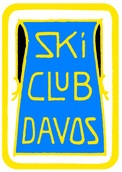Recent news:
4000th facility has been added to the Ski Jumping Hill Archive
7000th ski jumping hill added to the Archive!
New Granåsen ski jump in Trondheim inaugurated
Fire destroys ski jumps in Biberau-Biberschlag
Copper Peak: Funding of the renovation finally secured
Send us your ski jumping hill photos and information via email!
Latest updates:
2025-04-04
2025-04-03
Advertisement:
Partner:




 Davos
Davos
Alte Bolgenschanze
Data | History | Hill records | Contact | Map | Photo gallery | Comments
.
Alte Bolgenschanze:
| K-Point: | 53 m |
 Longest jump: Longest jump: |
49.0 m (Emil Knudsen  , 1913-02-11) , 1913-02-11) |
  Hill record: Hill record: |
48.0 m (Thorleif Knudsen  , 1913-03-02) , 1913-03-02) |
| Inrun length: | 92 m |
| Inrun angle: | 15° |
| Take-off height: | 2 m |
| Landing angle: | 33° |
| Further jumps: | no |
| Plastic matting: | no |
| Year of construction: | 1908 |
| Operating until: | ca. 1950 |
| Status: | destroyed |
| Ski club: | Ski Club Davos |
| Coordinates: | 46.785601, 9.823922 ✔ 
 |
History:
Already in winter 1901-02 the British brothers Edward and William Richardson introduced skiing to Davos and fascinated especially the younger people. One year later, the "Davos English Ski Club" was already founded.
On February 28, 1909, 1200 spectators attended the official inaugural competition of the first ski jumping hill of Ski Club Davos. Winners were the guest jumpers from Norway, with Harald Smith, who set up a new world record of 45 m, ahead of his brother Trygve Smith, who fell at 48 m, and followed by Trygve Myklegaard. In the afternoon the distances were shorter due to a weather change. Individual ski jumps then were shorter than 40 meters and double jumps came up to 36 meters.
During subsequent years, Bolgenschanze often hosted several competitions each winter, with one usually held on December 26. In March 1913, Thorleif Knudsen from Norway set a record of 48 meters, which was mistakenly considered as world record in Europe - However, a few weeks earlier Ragnar Omtvedt had already jumped 51.5 m in Ironwood.
During times of World War I, competitive activities continued on Bolgenschanze, but the record distance of 48 meters could not be surpassed anymore, also after the war.
When the 2nd Academic World Winter Games 1930 were to be hosted at Davos, a renewal of the ski jumping hill was obtrusive. However, instead Neue Bolgenschanze was constructed not far from the old facility in 1928-29.
The now "small Bolgenschanze" was still used after that - and was still the host of the events of the 1947 Academic World Winter Games. Presumably, it was given up in early 1950s.
 Hill records K53 (Men):
Hill records K53 (Men):
 Contact:
Contact:
 Map:
Map:
 Photo gallery:
Photo gallery:
Advertisement:




 Bled
Bled Wilkasy
Wilkasy Radenthein
Radenthein 













































Post comment: